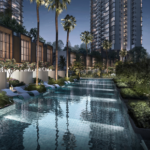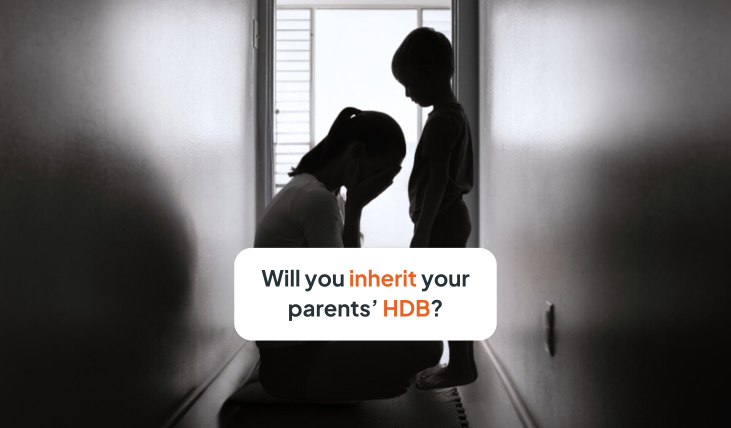Singapore’s real estate market has long been an enticing and dynamic landscape, attracting both local and foreign investors. However, the city-state’s rapid economic growth and surging property prices have led to concerns about affordability and the stability of the market. To address these issues, the Singaporean government has implemented a series of property cooling measures over the years, aiming to regulate demand, curb speculation, and maintain a sustainable housing market.
In this article, we take a deep dive into the evolution of property cooling measures in Singapore, with an interactive graph that visually captures the fluctuations in the price index and transaction volume over time, offering a comprehensive understanding of how these measures have shaped the market.
The Evolution of Property Cooling Measures in Singapore
History of Past Cooling Measures
Jump to a specific cooling measure you’d like to learn more about.
May 1996 | 1997 | Sep 2009 | Feb 2010 | Aug 2010 | Jun 2011 | Dec 2011 | Oct 2012 | Jan 2013 | Jun 2013 | Jul 2018 | Dec 2021 | Sep 2022 | Apr 2023
May 1996 Cooling Measures
In May 1996, significant changes were implemented in Singapore’s real estate sector. These changes included a revision of the Buyer’s Stamp Duty (BSD) policy, shifting the payment from the transfer of the title deed to the moment of signing the sale agreement. Additionally, a Loan-to-Value (LTV) limit of 80% was introduced, restricting borrowers from obtaining loans exceeding 80% of the property’s value. Foreigners were also barred from taking out housing loans in Singapore dollars.
Furthermore, measures were put in place to discourage property flipping and speculation. If a property was sold within one year of its purchase, the seller would be subjected to a 100% tax on any gains made. For properties sold within two years, the tax rate was reduced to 66.6% of gains, and for those sold within three years, it further decreased to 33.3% of gains.
These changes, implemented in May 1996, aimed to curb speculation, ensure financial prudence, and foster a more stable and sustainable housing market in Singapore.
In summary:
- BSD moved from transfer of title deed to time of signing sale.
- LTV introduced at 80%
- Foreigners not allowed to take SGD housing loans
- If property sold within 1 year, 100% of gains taxed
- If property sold within 2 years – 66.6% gains taxed
- If property sold within 3 years – 33.3% gains taxed
1997 Cooling Measures
The measures put in place in May 1996 may have worked a little too well, because in 1997, Singapore witnessed a reversal of previous measures implemented in the real estate sector. These reversals marked a significant shift in the government’s approach to address the evolving needs and dynamics of the housing market.
The Global Financial Crisis
In 2008, the whole world was rudely jolted awake. The Global Financial Crisis hit us like a ton of bricks, and boy, did it leave a mark. Everyone, from regular folks like you and me to big-shot banks and government regulators, felt the impact. But perhaps the most eye-opening thing was the subprime mortgage crisis in the US. It was a harsh reminder of what happens when people play fast and loose with borrowing and lending in the housing market. Let’s just say, it was a real wake-up call for everyone involved.
Sep 2009 Cooling Measures
Because of the global financial crisis, it was no surprise when September 2009 brought about key changes in the real estate landscape of Singapore. The government decided to abolish the interest absorption scheme, a policy that had been in place to support property developers by allowing them to absorb the interest on home loans for a specified period. With this abolition, developers were no longer able to provide this benefit to buyers, altering the financing options available to potential homeowners.
In addition, the government made the decision to abolish interest-only housing loans. Previously, borrowers had the option to repay only the interest on their loans for a specific period, which helped lower their initial monthly payments. However, with the abolishment of this option, borrowers were required to make both principal and interest payments from the start of their loan tenure.
In summary:
- Interest absorption scheme abolished
- Interest-only housing loans abolished
Feb 2010 Cooling Measures
In February 2010, as the demand for housing soared and property prices started to climb, the government took action to address the situation. They reintroduced the Seller’s Stamp Duty (SSD) policy, a measure aimed at curbing speculation in the market. Under this policy, properties sold within one year were subject to a 3% SSD, discouraging short-term flipping of properties.
In addition to the SSD, the government also made changes to the Loan-to-Value (LTV) limit. Previously set at 90%, the LTV limit was reduced to 80%. This adjustment had a direct impact on the maximum loan amount available to buyers, making it slightly more challenging for them to secure higher loan amounts.
These measures were implemented to ensure a more stable and sustainable property market. By discouraging speculative activities and reducing the leverage ratio for buyers, the government aimed to promote a healthier and more balanced real estate environment.
In summary:
- SSD reintroduced
- Properties sold within 1 year = 3% SSD
- LTV changed to 80% from 90%
Aug 2010 Cooling Measures
August 2010 marked an important milestone in Singapore’s property market. The SSD policy, which aimed to curb property speculation, was expanded to include properties sold within three years. This had a significant impact on homeowners with existing housing loans, as their loan-to-value (LTV) limit was reduced to 70%. Additionally, the minimum cash down payment requirement increased to 10%. These changes meant that buyers had to provide more initial funds when purchasing a property.
In summary:
- SSD expanded to properties sold within 3 years
- Owners with existing housing loans saw LTV reduced to 70%
- Minimum cash down payment increased to 10%
Jun 2011 Cooling Measures
Moving forward to June 2011, the SSD rates were revised once again. Properties sold within the first year were now subject to a 16% SSD, followed by 12% in the second year, 8% in the third year, and 4% in the fourth year. These revised rates aimed to further deter property speculation. Meanwhile, the LTV limit for homeowners with existing housing loans was further lowered to 60%.
In summary:
- SSD Increased to 16% for properties sold within a year
- 12% in the 2nd year
- 8% in the 3rd year
- 4% in the 4th year
- LTV lowered to 60% for those with existing housing loans
Dec 2011 Cooling Measures
In December 2011, a new policy called the Additional Buyer’s Stamp Duty (ABSD) was introduced. This policy targeted different categories of property buyers. Foreigners were required to pay a 10% ABSD, while Permanent Residents (PRs) had to pay 3% for their second property onwards. Singaporeans (SGPs) were also subject to a 3% ABSD for their third property onwards. These measures were implemented to ensure that the property market remained stable and accessible to Singaporeans.
In summary:
- ABSD introduced
- Foreigners to pay 10%
- PRs to pay 3% for 2nd property onwards
- SGP to pay 3% for 3rd property onwards
Oct 2012 Cooling Measures
October 2012 marked a turning point in housing loan tenure, with the maximum set at 35 years. Additionally, the Loan-to-Value (LTV) limit was adjusted for loans exceeding 30 years or for borrowers reaching 65 by the end of the loan. Those without outstanding housing loans saw their LTV limit reduced to 60%, while those with existing housing loans faced a 40% limit.
In summary:
- Max housing loan set at 35 years
- LTV for loans exceeding 30 years or when the borrower would reach 65 by the end of the loan is reduced to 60% for those with no outstanding housing loans and 40% for those with existing housing loans
Jan 2013 Cooling Measures
Fast forward to January 2013, and the Additional Buyer’s Stamp Duty (ABSD) rates experienced an increase. Singaporeans purchasing their second property were subject to a 7% ABSD, while those buying their third property onwards had to pay 10%. Permanent Residents (PRs) faced a 5% ABSD for their first property and 10% for subsequent properties, while foreigners saw a significant jump to 15%. Furthermore, the LTV limit for borrowers with existing housing loans decreased to 50%, and the cash down payment requirement rose to 25%.
By implementing higher ABSD rates, the government sought to reduce the attractiveness of the property market as an investment asset class. The increase in ABSD rates effectively raised the cost of purchasing additional properties for both Singaporeans and foreigners, thereby discouraging speculative buying and dampening demand.
This measure was introduced amidst concerns of rising property prices and an overheating property market. It aimed to promote a more stable and sustainable property market by moderating price growth and preventing a property bubble from forming.
In summary:
- ABSD Increased
- SGP 2nd property, 7%
- SGP 3rd property onwards, 10%
- PR 1st property at 5%
- PR 2nd property onwards at 10%
- Foreigners raised to 15%
- LTV reduced to 50% for those with existing housing loans
- LTV reduced to 40% for those with more than 1 existing housing loans
- Cash down payment increased to 25%
Jun 2013 Cooling Measures
June 2013 brought about the introduction of the Total Debt Servicing Ratio (TDSR) as a crucial factor in housing loan applications. This new measure assessed borrowers’ eligibility based on their debt-to-income ratios, impacting their ability to secure housing loans. By considering borrowers’ debt-to-income ratios, the TDSR helps to prevent excessive borrowing and reduce the risk of defaults. It promotes responsible lending practices and helps safeguard the stability of the housing market.
Jul 2018 Cooling Measures
July 2018 saw a further rise in ABSD rates to cool down the market, which was experiencing a surge in prices. The government was concerned about the potential risk of a property bubble and wanted to ensure that housing remained affordable for Singaporeans. Singaporeans purchasing their second property paid 12%, while those purchasing their third property onwards paid 15%. PRs purchasing their second property onwards faced a 15% ABSD, while foreigners saw an increase to 20%. LTV limits were reduced across all categories by 500 basis points.
In summary:
- ABSD rates increased
- SGP purchasing 2nd property – 12%
- SGP purchasing 3rd property onwards – 15%
- PR purchasing 2nd property onwards – 15%
- Foreigners raised to 20%
- LTV reduced by 500 basis points across all categories
Dec 2021 Cooling Measures
Similarly, in December 2021, the ABSD rates were raised again to address the rising property prices and prevent excessive speculation. Singaporeans purchasing their second property paid 17%, while those purchasing their third property onwards faced a 25% ABSD. PRs and foreigners saw an increase to 25% and 30% respectively.
In summary:
- ABSD further tightened
- SGP purchasing 2nd property – 17%
- SGP purchasing 3rd property onwards – 25%
- PR purchasing 2nd property onwards – 25%
- Foreigners raised to 30%
Sep 2022 Cooling Measures
In September 2022, a 15-month wait period was implemented for private property owners switching to Housing and Development Board (HDB) properties. The 15-month wait period for private property owners switching to HDB properties aimed to discourage speculative activities and prevent an influx of private property owners into the public housing market. The TDSR was also increased to 4% for residential loans and 5% for non-residential loans, while the LTV limit for HDB loans was reduced to 80%.
In summary:
- 15-month wait period for private property owners switching to HDB
- TDSR increased to 4% for residential and 5% for non-residential properties
- LTV for HDB reduced to 80%
Apr 2023 Cooling Measures
In the wake of post-Covid pent-up demand and skyrocketing property prices, the government decided to raise the stakes once again in April 2023. ABSD rates saw yet another jump; Singaporeans purchasing their second property will now have to pay 20%, while those purchasing their third property onwards faced a whopping 30% ABSD. For PRs, it’s 30% for the purchase of their second property, and for subsequent properties, the ABSD rose to 35%. Foreigners were hit the hardest by the ABSD rate hikes as they now face 60% ABSD, double the previous 30%.
These series of policy adjustments reflect the Singapore government’s proactive approach in managing the property market and ensuring its stability. By implementing measures such as adjusting loan tenure, LTV limits, ABSD rates, and introducing TDSR, the government aims to strike a balance between promoting homeownership and preventing speculative activities. It is crucial for potential buyers and investors to stay informed about these evolving policies to make informed decisions in the real estate market.
In summary:
- ABSD further tightened
- SGP purchasing 2nd property – 20%
- SGP purchasing 3rd property onwards – 30%
- PR purchasing 2nd property – 30%
- PR purchasing 3rd property onwards – 35%
- Foreigners raised to 60%
As we conclude the whirlwind of cooling measures in Singapore’s real estate market, one thing remains clear: this market is no place for the faint of heart. From reversed measures to tightened regulations, it’s been a wild ride. So, buckle up, stay informed, and get ready to conquer the ever-changing landscape of property in the Lion City.
May the odds be ever in your favour!
Trying to navigate the property scene amid all the cooling measures?
Speak to a property agent who can provide a professional opinion on what would be the best property decision you can make.
We’d recommend filling up a callback form on our website and booking a consultation with our professional and dedicated agents. We have a strong track record including being recognized as the top 1% of agents by the Council of Estate Agents by transactions and given over 8,000 5-star reviews across all platforms.
Consultation is free of charge and arranged at your convenience. Contact us today and let us help you make the best decision on your biggest and most personal asset, your home.



































































